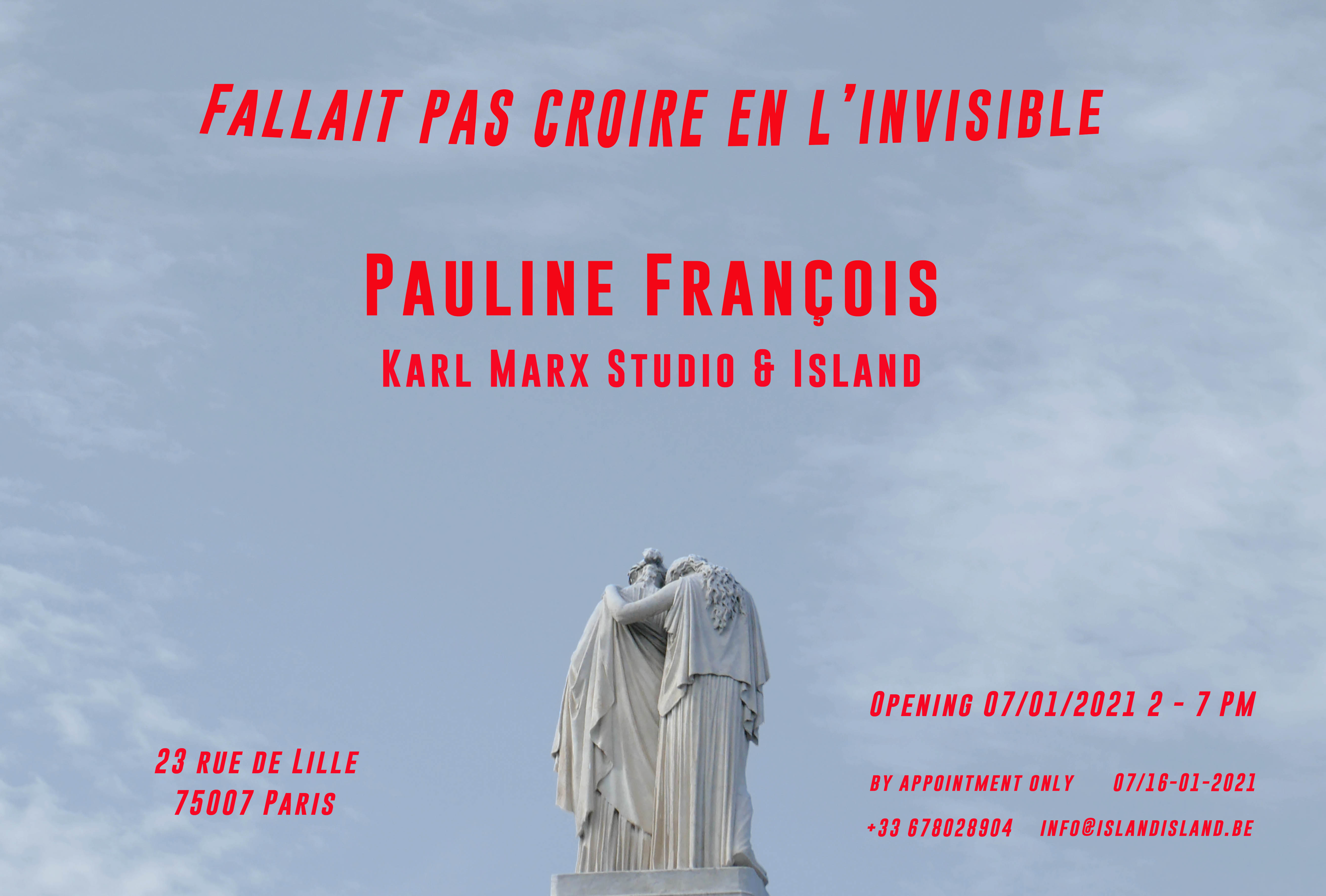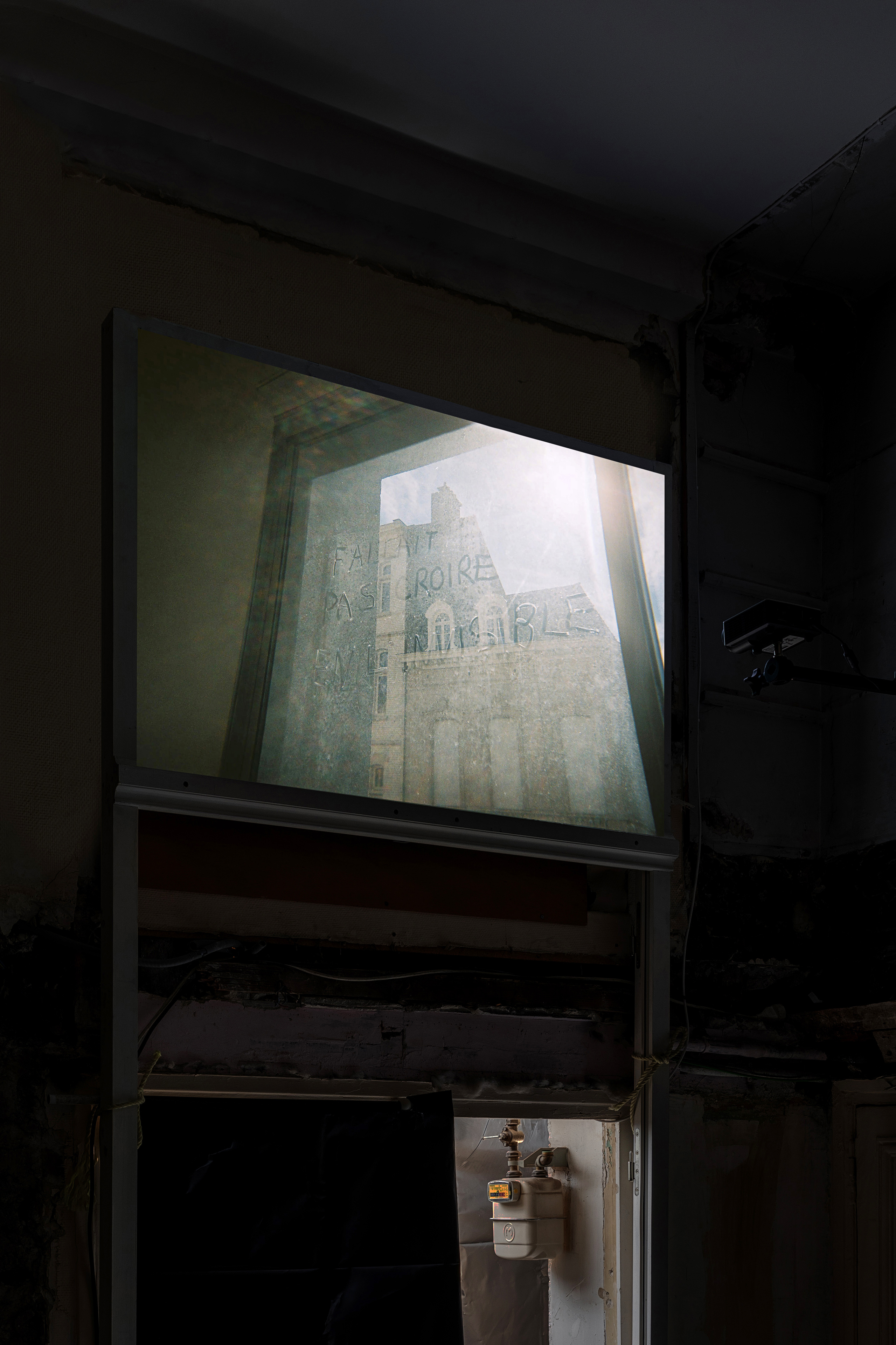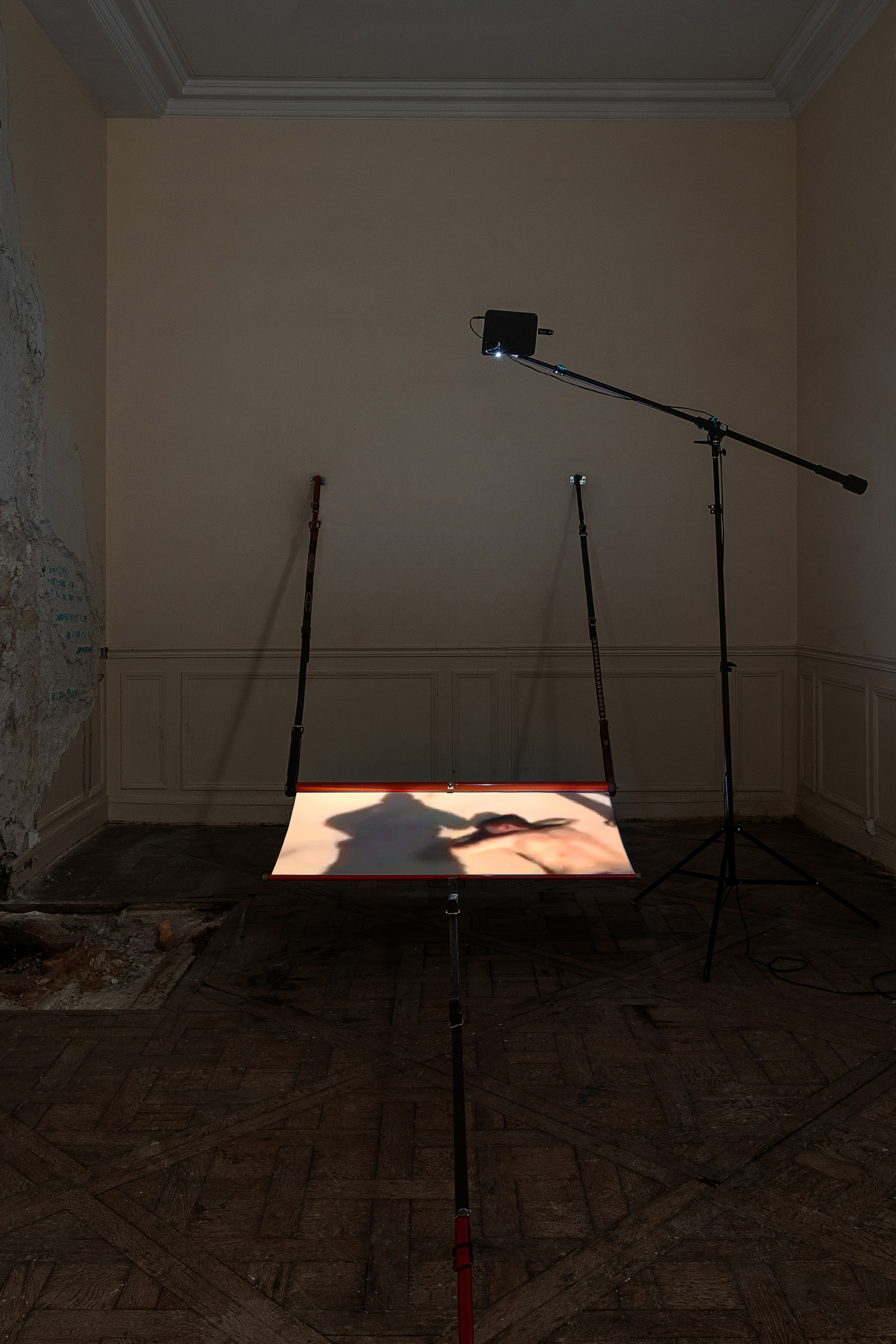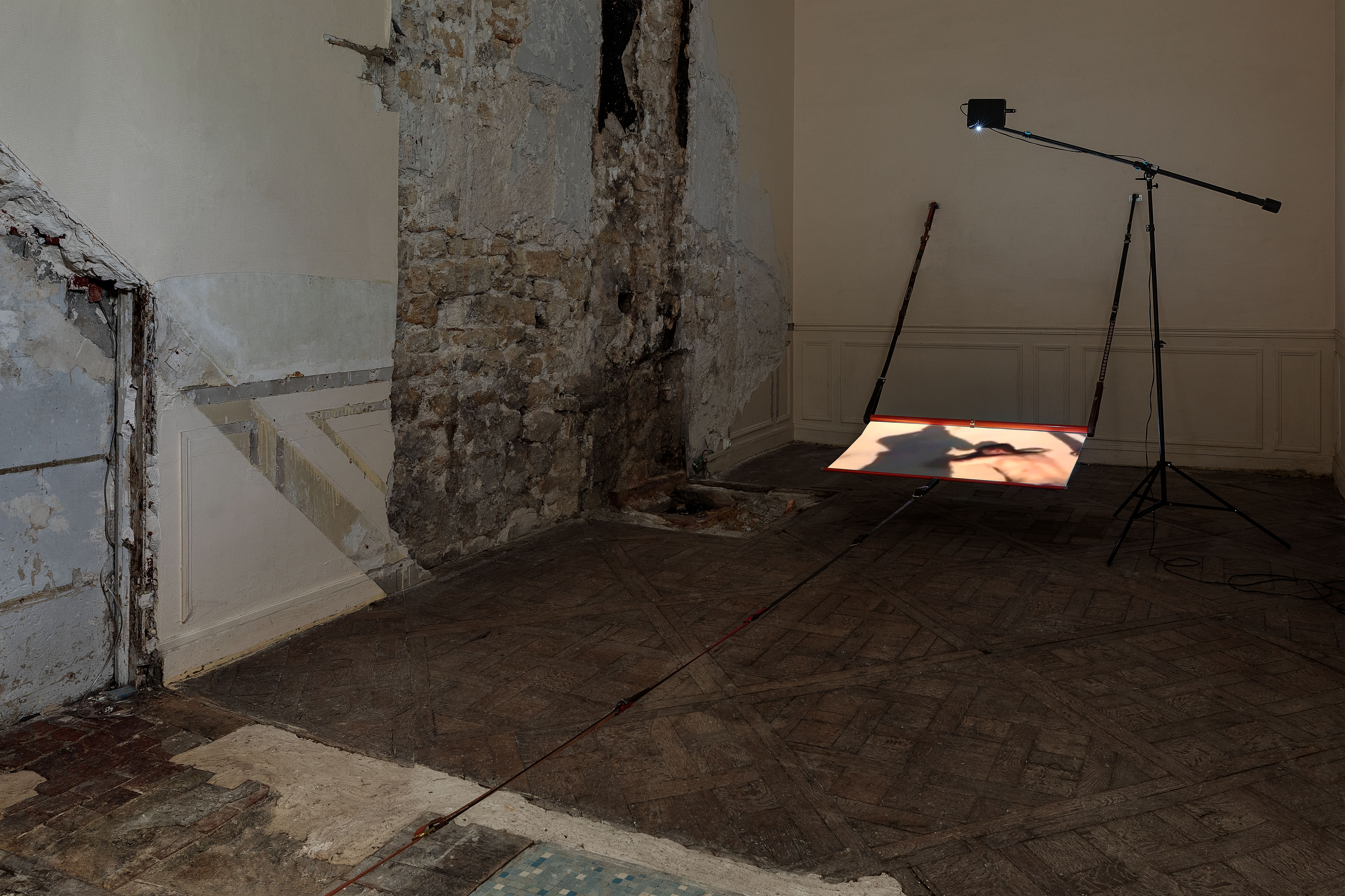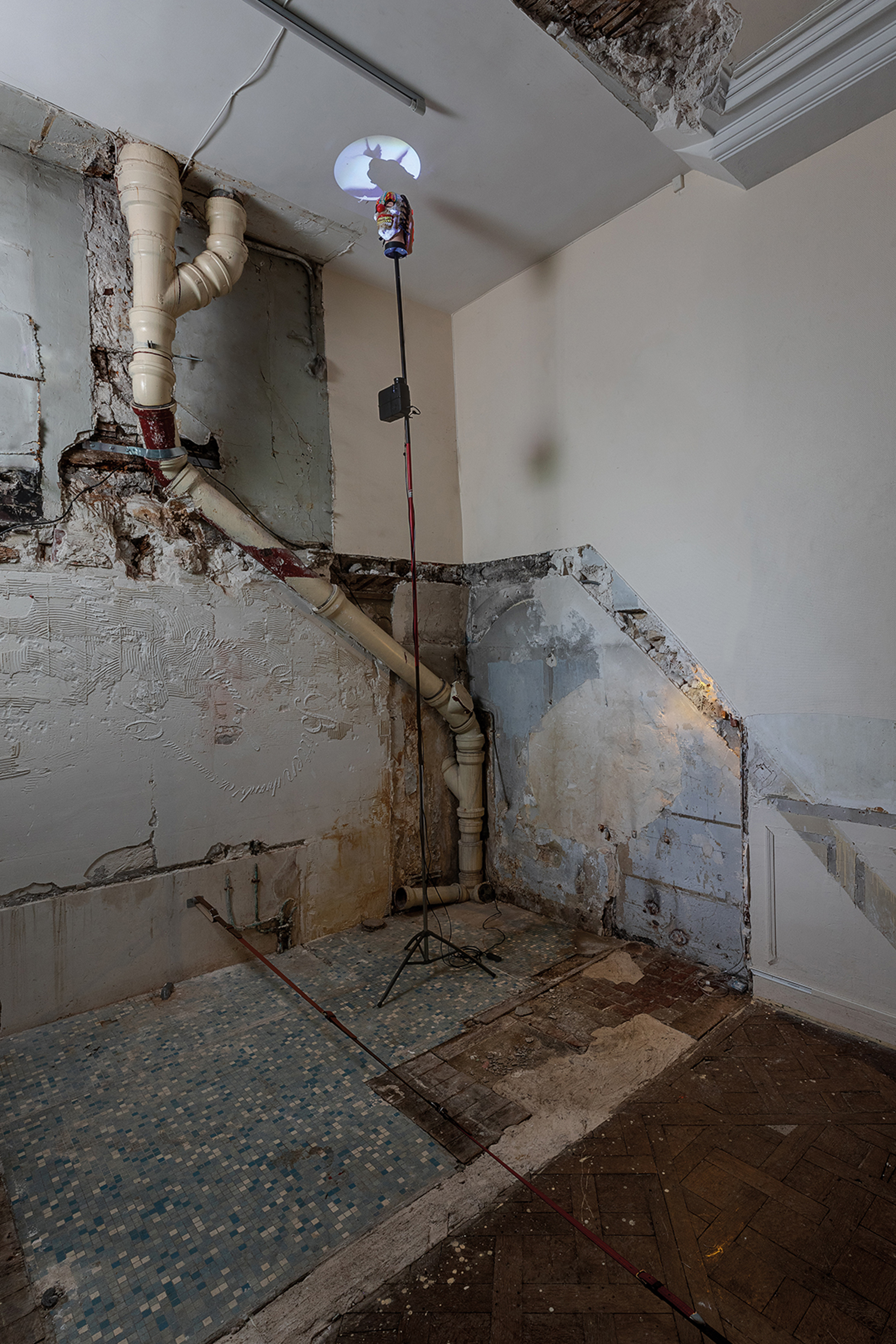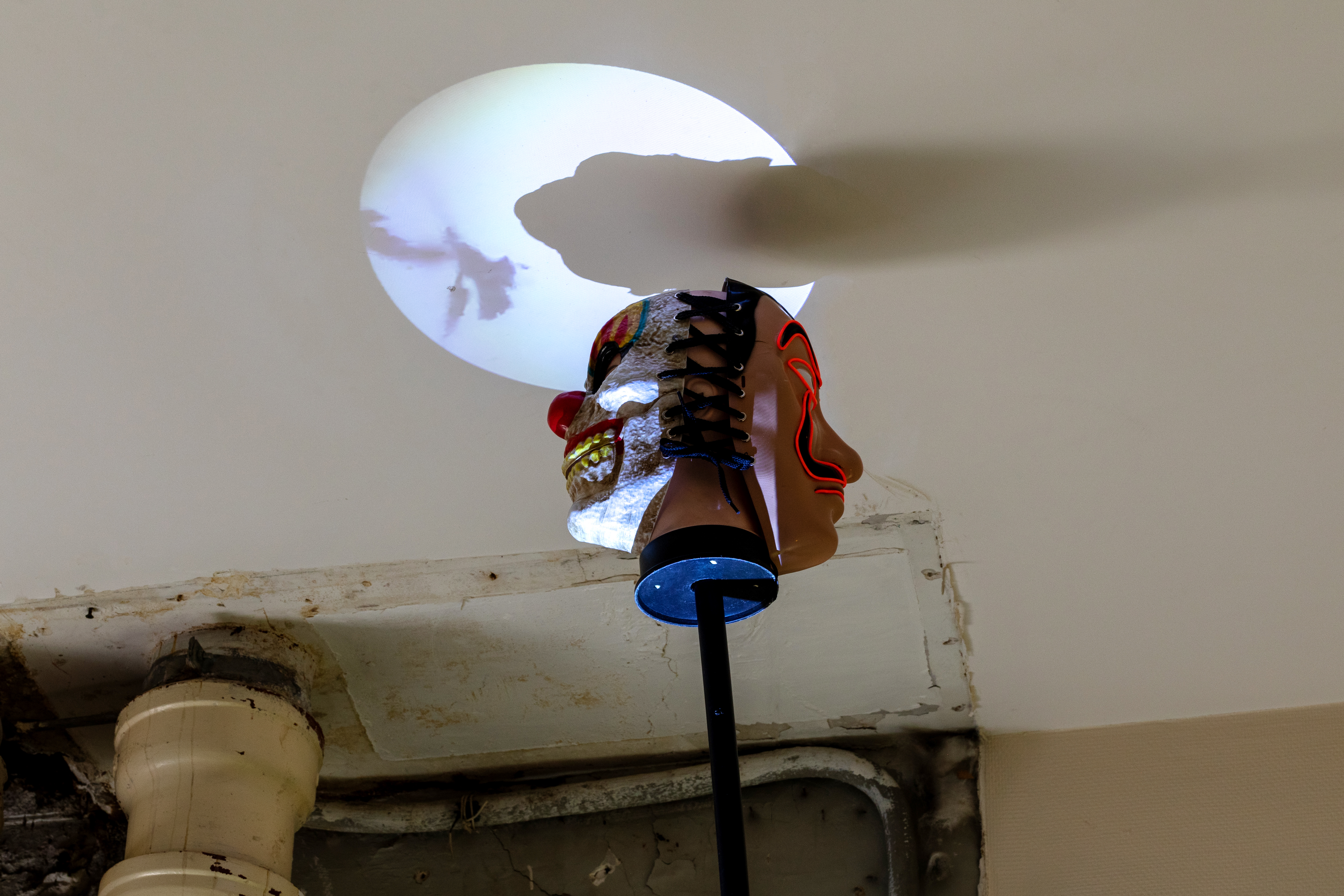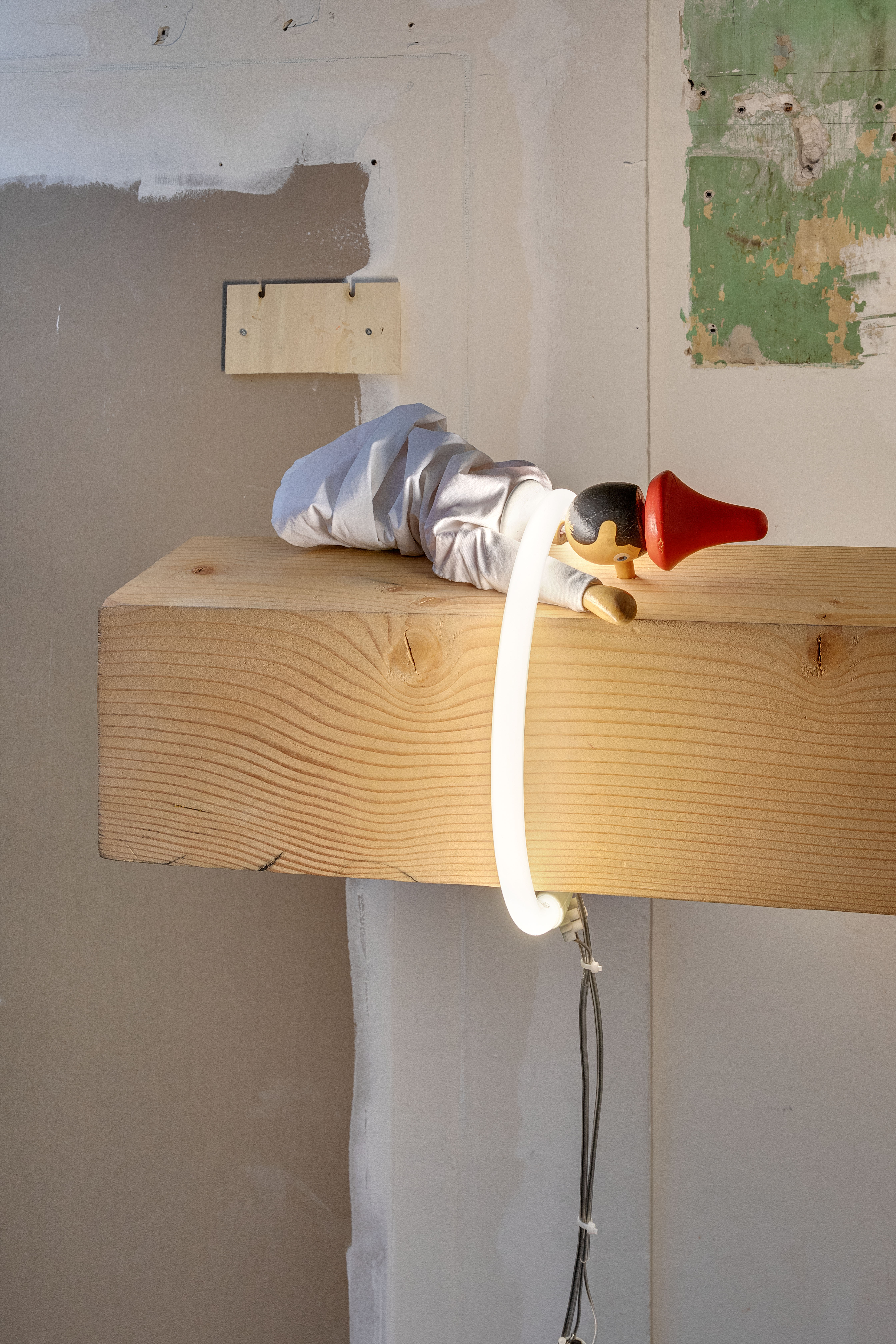FALLAIT PAS CROIRE EN L’INVISIBLE,
EXPOSITION PERSONNELLE 2021
Exposition solo du 07.01 au 16.01/2021 dans l’artist-
run-space le Karl Marx Studio à Paris (FR) et réalisée sous le commissariat d’Emmanuelle Indekeu.
“ Pour cette première exposition en solo, je souhaite confronter des travaux plus anciens à des plus récents,
semer d’embûches le Karl Marx Studio ; le plonger dans une pénombre inquiétante. Mes propositions, qui
varient d’échelles et de médiums, se déploient à l’horizontale et à la verticale afin de faire jongler le regard
du spectateur de toutes parts. Le petit os de poulet (l’os à souhait) est comme un pied de nez à l’exposition.
Dans son Traité de la peinture, Leon Battista Alberti considère le tableau comme une fenêtre ouverte sur le
réel. De façon moins conventionnelle et plus contemporaine, je conçois la sculpture de la même manière,
comme une ouverture, un regard singulier porté sur le monde. Je cherche à produire des pièces qui puissent
alimenter la réflexion, troubler les affects, générer de nouvelles associations d’idées et de formes. Il s’agit
d’une quête permanente qui consiste à matérialiser de la pensée. In fine, l’enjeu consiste à faire retour sur le
monde et la vie, à épouser l’histoire humaine et sociale...avec le maximum de pertinence, de délicatesse, et
parfois de cruauté."
P.F
Les travaux de Pauline François tiennent du piège. Sous leurs aspects très directs, ils en appellent à une forme
d’implication très éloignée des slogans et de la littéralité trop souvent en œuvre dans l’art dit «engagé ». Pour
autant, son travail parle bien du monde, sous ses aspects les plus tragicomiques et sombres. Les recherches de
l’artiste se nourrissent d’une réflexion acerbe sur les formes contemporaines de barbarie et les modalités de
diffusion des images médiatiques. À partir de vidéos ou d’images glanées sur Internet, l’artiste crée des
œuvres qui réduisent la mise à distance et la rationalisation que peut susciter la violence. Elles impliquent
alors de façon très vive la subjectivité des spectateurs, tiraillés entre l’attrait et la répulsion que suscitent
l’érotisation d’un martyr, la figure hideuse d’un clown maléfique, la beauté fragile d’un os devenu lance-
pierre...
La sculpture est ici association, collage et tend vers l’installation. Homme de douleur invite tant le regard que
le corps : l’image projetée au ras du sol, amalgamant les ombres des regardeurs et des tortionnaires, tient d’un
miroir où se confond la place des uns et des autres et où s’abîment l’attirance, l’innocence et la domination.
En deçà ou au-delà de la métaphore, l’œuvre relève d’une mise en action : détourner ou non le regard,
enjamber les chaines et les trouver belles, ausculter la peau et les plaies.
Œuvrer à cette fascination et chercher à la maintenir, comme en suspension, relève d’un travail plastique ou
chaque élément, du plus modeste au plus imposant, fait sens. Il n’y a pas de « détails » dans les sculptures de
Pauline François. Mêmes si celles-ci font souvent appel à une multitude d’artéfacts, chaque objet ajoute un
élément au rébus, déportant le sens en amont de toute facilité conclusive. Le trouble généré est à l’échelle des
clichés détournés, des modèles malmenés ou des catastrophes en devenir.
Un morceau de chair tremble à leurs maigres mentons convoque les figures hideuse et guerrière d’un Janus
contemporain, empruntant tant à la monstruosité riante du capitalisme qu’à ses déterritorialisations
feuilletonesques et pop. Double visage brandit au sommet d’une pique, auréolé d’un ciel moucheté d’oiseaux
empruntés à Hitchcock. La scène tient presque d’une image sainte, mais à rebours de toute complaisance,
d’héroïsation et de Salut. La menace que suggèrent les oiseaux semble agir telle la sanction du réel,
indifférente aux récits qui portent les Idoles au pinacle ou les sacrifient.
Nous avons inventé le bonheur, disent les derniers hommes et ils clignent de l’œil, fait référence aux croyances
et à la magie sociale. La tradition veut que l’on brise la furcula du poulet après l’avoir dévoré. Le petit os est
tiré de chaque côté et, lorsqu’il se casse, le vœu de celui ayant la plus grande partie est exhaussé. L’os est ici
suspendu à un élastique et voisine à proximité d’un œil placé sur une petite plaque métallique. Il est
potentiellement la munition et la cible d’une furcula devenue catapulte, à rebours du bonheur simple qu’elle
est censée apporter. La matérialité de l’œil en décomposition, la blancheur et la finesse de l’os évoque la
cruauté surréaliste d’un Buñuel mais aussi l’aveuglement candide d’une humanité qui, soumise à ses propres
fictions, n’œuvre qu’à la fermeture des possibles.
Dans ce petit théâtre où la cruauté se dispute à la dystopie et à l’absurde, Pinocchio apparait comme la figure
la plus humaine. Encerclé de lumière, son nez fait corps avec la poutre sur laquelle il est suspendu. On ne sait
jamais vraiment de quel bois sont faits les mensonges, de quel sac d’os viendra la lumière. A toute bonne fée,
Pauline François oppose la pointe d’un scalpel. Au spectateur d’en éprouver la finesse, de refermer sur lui le
piège et de se surprendre, peut-être, d’appartenir au réel.
Benoît Dusart
ENG︎
FALLAIT PAS CROIRE EN L’INVISIBLE,
SOLO SHOW 2021
Solo exhibition from 07.01 to 16.01/2021 in the artist-
run-space the Karl Marx Studio in Paris (FR) and curated by d’Emmanuelle Indekeu.
“ For this first solo exhibition, I would like to compare older works with more recent ones, to sow obstacles in
the Karl Marx Studio; plunge it into a disturbing darkness. My proposals, varying in scale and medium,
unfold horizontally and vertically, playing with the spectator’s gaze from all directions. The small chicken
bone (the wishbone) hangs as if thumbing its nose at the exhibition. In his Treatise on Painting, Leon Battista
Alberti considers the painting as a window open to reality. In a less conventional and more contemporary
way, I see sculpture in the same way, as an opening, a singular look onto the world. I try to produce pieces
that can fuel reflection, disturb affects, generate new associations of ideas and forms. It is an ongoing quest to
materialize thought. Ultimately, the challenge is to return to the world and to life, to embrace human and
social history ... with a maximum of relevance, delicacy, and sometimes cruelty."
P.F
Pauline François’ works bear a likeness to traps. Seemingly direct, they call for a form of involvement quite
different from the use of slogans and literal claims often at work in "activist" art. Nonetheless, her work
speaks of the world in its most tragicomic and dark aspects. The artist's research incisively examines
contemporary forms of barbarism and the methods with which images are disseminated in the media.
Beginning with videos or images collected on the Internet, the artist creates works that reduce the sense of
distancing and rationalization that violence can generate. As such they vividly involve the spectators’
subjectivity, torn between the attraction and the repulsion aroused by the eroticization of a martyr, the hideous
figure of an evil clown, the fragile beauty of a bone turned slingshot. ...
This exhibition explores sculpture as association, collage and installation. Homme de douleur invites both the
gaze and the body of the viewer: the image projected close to the ground, mixing both the shadows of viewers
and torturers, is the result of a mirror where the positions of each merge and where attraction, innocence and
domination are engulfed. Beneath or beyond the metaphor, the work comes to life through the viewer: to
choose to look away or not, stepping over chains and finding them beautiful, examining skin and wounds.
Working on this fascination and seeking to maintain it, as if it were hanging in mid air, is a creative task in
which each element, from the most modest to the most imposing, has a purpose. There are no "details" in
Pauline François’ sculptures. Even if these often involve a multitude of artefacts, each object adds an element
to the riddle, constantly shifting the meaning upstream of any given conclusion. The confusion thus generated
is to the scale of the hijacked clichés, distorted models and disasters in the making.
Un morceau de chair tremble à leurs maigres mentons, summons the hideous and warlike figures of a
contemporary Janus, borrowing as much from the laughing monstrosity of capitalism as from its soap-opera
like deterritorializations. A double-face is brandished atop a spike, surrounded by a sky speckled with
Hitchcockesque birds. The scene resembles a holy image, yet evoks the very opposite of their common themes
of complacency, heroisation and salvation. The threat suggested by the birds seems to act like the inevitable
consequence of reality, indifferent to the narratives that either lift Idols to the top or sacrifice them.
Nous avons inventé le bonheur, disent les derniers hommes et ils clignent de l’œil, refers to people’s beliefs
and to social magic. Tradition has it that the chicken’s furcula bone is broken after its meat has been eaten.
Two people pull the small bone from either side and, when it breaks, the wish of the one holding the largest
end is granted. In this exhibition the bone is suspended from a rubber band, next to an eye placed on a small
metal plate. This eye sits both as potential ammunition and as the target of the furcula turned catapult. This
juxtaposition upturns the happy intention of this tradition. The materiality of the decomposing eye and the
white delicacy of the bone evoke at once the surreal cruelty of a Buñuel but also the candid blindness of
humanity which, subjected to its own fictions, closes off a world of possibilities.
In this small theater where cruelty is contested by dystopia and absurdity, Pinocchio appears as the most
human of figures. Encircled by light, his nose is joined as one with the beam from which he is suspended. You
never really know of what wood lies are made of, from which bag of bones the light will come. To every fairy
godmother Pauline François opposes the point of a scalpel. It is up to the spectator to experience its finesse, to
close the trap and to perhaps find he truthfully belongs to reality.
Benoît Dusart
Copyright © Pauline François. All rights reserved.
